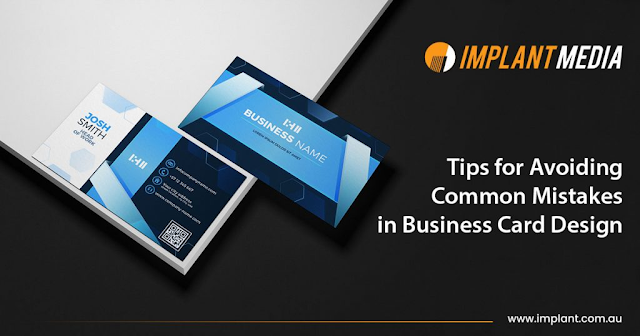Tips To Avoid Mistakes in Business Card Design
In the fast-paced world of business, where first impressions matter, the humble business card serves as a tangible representation of your professional identity. However, designing an effective business card requires more than just contact information and a logo; it demands careful consideration to ensure that your card stands out for all the right reasons. In this blog, we'll explore essential tips to help you avoid common mistakes and craft a business card that leaves a lasting impact.
1. Define Your Purpose:
Before diving into the design process, clearly define the purpose of your business card. Are you aiming to convey a sense of creativity, professionalism, or innovation? Understanding your goals will guide your design choices and help you create a card that aligns with your overall brand message.
2. Simplify Your Message:
Less is more when it comes to business card design. Avoid the temptation to overcrowd your card with excessive details. Focus on essential information, including your name, job title, company name, phone number, and email address. A clutter-free design ensures that your message is concise and easily digestible.
3. Prioritize Legibility:
Select fonts and colors that enhance legibility. Steer clear of overly intricate fonts or color combinations that may strain the eyes. A good rule of thumb is to choose a readable font size and ensure there's enough contrast between the text and background. Legibility is key to making a positive impression.
4. Invest in Professional Photography:
If your business card includes a photo, invest in professional photography. A high-quality, well-lit image conveys competence and attention to detail. Avoid using low-resolution or poorly cropped pictures that can detract from the overall professionalism of your card.
5. Customize with Originality:
While templates can be convenient, they often lack the uniqueness that sets your business apart. Invest in a custom design that reflects your brand identity. An original and thoughtful design not only makes your card memorable but also communicates professionalism and dedication to your craft.
6. Include Essential Contact Information:
Ensure that your business card provides all the necessary contact information. Double-check that your phone number and email address are accurate and up-to-date. Including multiple ways to reach you increases the likelihood of successful networking and communication.
7. Pay Attention to Card Stock Quality:
The choice of card stock contributes to the tactile experience of your business card. Opt for a high-quality, durable material that reflects the professionalism of your brand. A well-chosen card stock not only feels more substantial but also communicates a commitment to quality.
8. Utilize White Space Effectively:
White space, or negative space, is a powerful design element that can enhance visual appeal. Don't shy away from using white space strategically to guide the viewer's eyes and create a balanced layout. A well-thought-out design with ample white space ensures a clean and professional look.
9. Consider the Printing Process:
Before sending your design to the printer, familiarize yourself with printing specifications. Ensure that your design adheres to the printer's guidelines regarding dimensions, resolution, and bleed settings. This attention to detail prevents unexpected cropping or distortion during the printing process.
10. Double-Sided Design Opportunities:
Don't forget to leverage both sides of your business card. The back of the card offers valuable real estate for additional information, a tagline, or a call to action. Maximize this space to communicate more about your brand and encourage engagement.
11. Proofread Thoroughly:
Typos and errors on a business card can be detrimental to your professional image. Thoroughly proofread all text before finalizing the design. Check for correct contact details, spelling, and grammar. A meticulous review process ensures that your business card is error-free and projects a polished image.
12. Seek Feedback:
Before going to print, seek feedback from colleagues, friends, or mentors. Fresh perspectives can provide valuable insights and catch potential design flaws that you might have overlooked. Constructive criticism helps refine your design and ensures that your business card is well-received by a diverse audience.
In conclusion, crafting an effective business card requires a thoughtful and strategic approach. By avoiding common mistakes and embracing these tips, you can create a business card that not only represents your professional identity but also makes a lasting impression on those you meet. Remember, your business card is more than just a piece of paper; it's a tangible extension of your brand and an opportunity to make a memorable connection.


Comments
Post a Comment